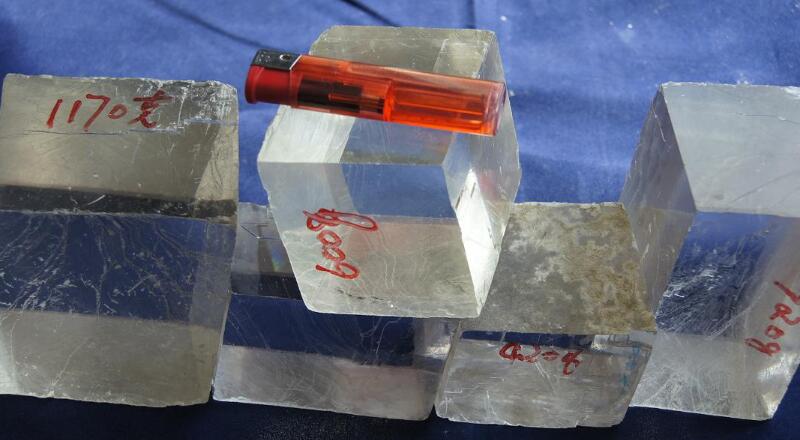What is the crystal structure of calcite?

The crystal structure of calcite is the basis of its physical and chemical properties. The following are the main characteristics of its crystal structure:
1. Chemical composition
Chemical formula: CaCO₃, belongs to carbonate minerals.
2. Crystal system
Trigonal system: Calcite belongs to the trigonal system, and the space group is R‾3c.
3. Unit cell parameters
Parameters: a = 4.99 Å, c = 17.06 Å, α = β = 90°, γ = 120°.
4. Structural description
Calcium ion: located at the vertices and body center of the unit cell.
Carbonate ion: located between calcium ions, planar triangular structure, carbon atom in the middle, oxygen atoms at three vertices.
5. Bonding mode
Ionic bond: There is an ionic bond between calcium ion and carbonate ion.
Covalent bond: There is a covalent bond inside the carbonate ion.
6. Cleavage and hardness
Complete cleavage: There is complete cleavage along the rhombohedral {1011} direction.
Hardness: Mohs hardness is 3.
7. Birefringence
Birefringence: Due to the anisotropy of the crystal structure, light will be birefred when passing through.
8. Polymorphism
Polymorphism: Calcite, aragonite and vaterite are polymorphic variants with the same chemical composition but different crystal structures.
9. Formation environment
Sedimentation and metamorphism: Common in sedimentary and metamorphic rocks, also found in hydrothermal veins and cave sediments.
In summary, the crystal structure of calcite determines its physical and chemical properties, including cleavage, hardness, birefringence, etc. These properties make it have important applications in industry and science.
Statement: If the content on this site infringes upon the legitimate rights and interests of the original author, please contact this site to delete it.

